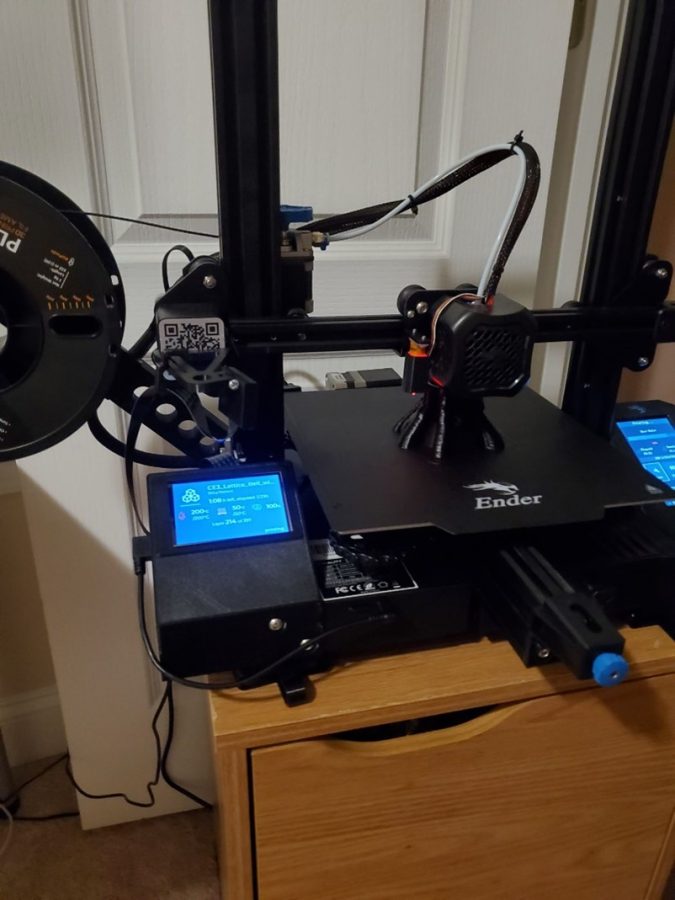3D Printers: Limitless Potential
An Ender 3Pro Printer in action.
January 12, 2022
3D printers were treated as just another tool that was too techy for most businesses, but lately, they have shown their worth in a multitude of applications. In the late 1980s, Chuck Hall wanted to experiment with using candle wax to make a toy for his daughter, and he proceeded to develop the first 3D printer. It has been 20 years, and the topic of 3D printing has been vastly expanded with the use of resin and pens. The machine works with the use of an extruder and the use of meltable plastic that is stacked in many layers to create an object. Whether it’s a cool hobby or an essential part of a business now, the growth of these machines is more apparent than ever.
Popularity:
One of the main questions that lie on everyone’s mind is how 3D printers are so popular. “The fact that the pandemic and the rise of 3D printers have gone up, is no coincidence,” says a 3D printer hobbyist. To this, an interviewee responded that the recent pandemic caused an increase of hobbies and 3D printers; “they are in the long term, mostly considered a toy and it gives the people the ability to model for certain hobbies.” The common consensus also agrees, with an overall 79.2 percent of people agreeing that people should have or have access to a 3D printer in a recent poll. In addition, the variety of the types of filament and types of printers also aid in the expansion of the topic. An example of some possibilities are Material Jetting printers, EBM printers, or Binder Jetting printers
Further Experimentation:
Based on information from multiple other news outlets, the topic of 3D printing is a pretty hot one. This is supported by the fact that 66.7 percent of survey takers say that 3D printing should be looked into further and 29.2% of people say that they strongly agree. This NPR article goes on to claim that there are new branches of filament types that could include spider silk; and existing statements like it. However, when the question of whether continued experimentation would drive down the price and make them more affordable, the hobbyist said, “That might work for a little, but when it would become widespread, companies would probably still drive the price up because of the limited competition between companies.” The populous says yes, but there are things to be wary of.
The Solution to Many Problems:
The short answer to this is a collaborative no, but this verdict is in no way an end-all-be-all response. In a poll that was taken for this, 75 percent of people say that 3D printers are just as useful as 2D printers, if not more. This view is quite different with $500-$1500 on the line and, 82.6 percent of people saying they would be discouraged to spend the money to get one. As another point, when the hobbyist was asked if 3D printers will ever be used more than traditional printers, he said “The fact of the matter is that as useful as they may seem, and they are if you think about it, there are a lot more circumstances that need paper documents rather than 3D models in the workspace.” Scientists from other laboratories have reached the same conclusion. So, more people want 3D printers, but in the end, at current technology, our current lives wouldn’t benefit that much from 3D printers. This answer is there is no one-size-fits-all solutions to problems.










